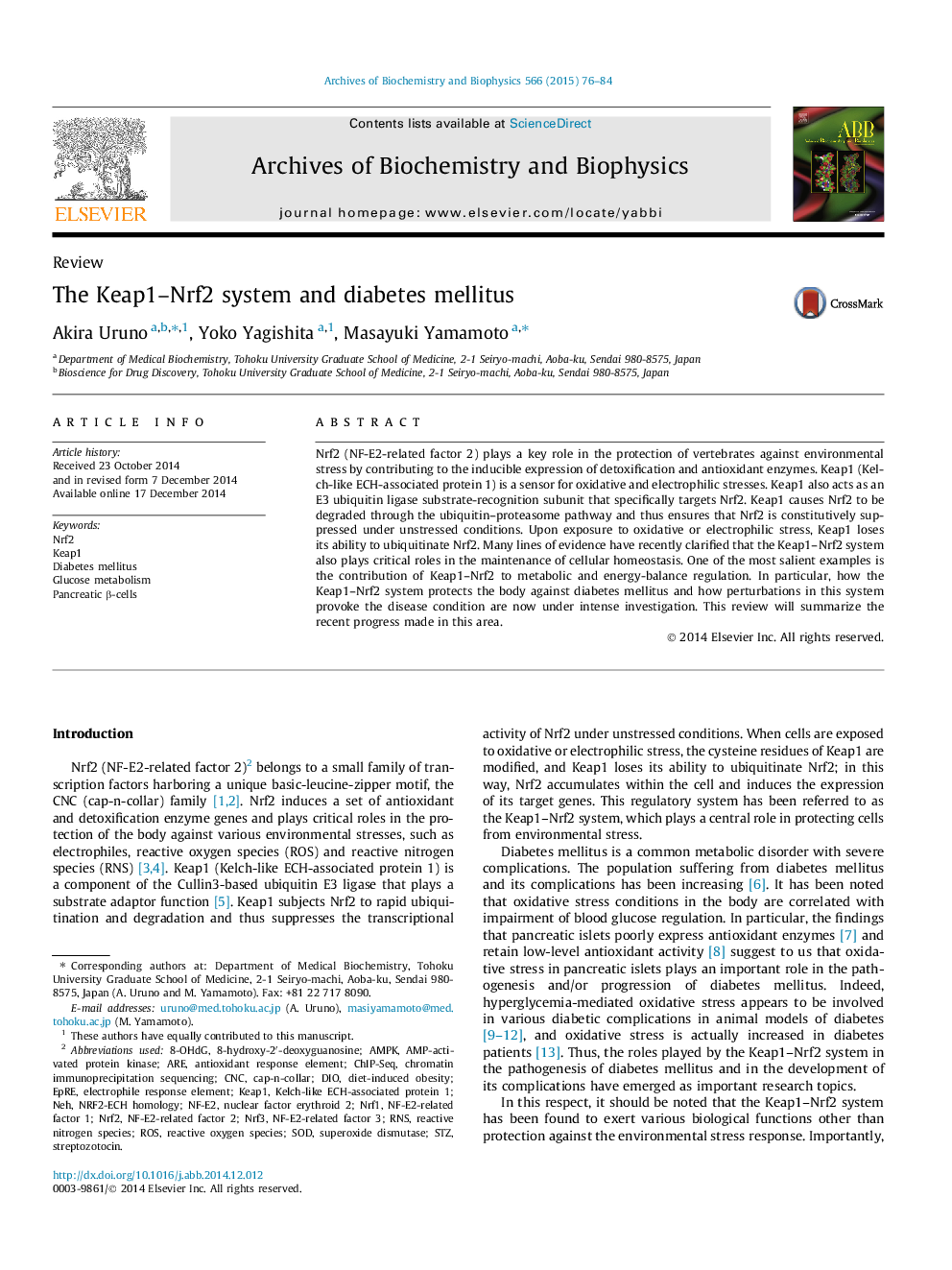| Article ID | Journal | Published Year | Pages | File Type |
|---|---|---|---|---|
| 1925034 | Archives of Biochemistry and Biophysics | 2015 | 9 Pages |
•The Keap1–Nrf2 system protects pancreatic β-cells from oxidative stress.•The Keap1–Nrf2 system improves insulin resistance.•The Keap1–Nrf2 system suppresses diabetes mellitus.
Nrf2 (NF-E2-related factor 2) plays a key role in the protection of vertebrates against environmental stress by contributing to the inducible expression of detoxification and antioxidant enzymes. Keap1 (Kelch-like ECH-associated protein 1) is a sensor for oxidative and electrophilic stresses. Keap1 also acts as an E3 ubiquitin ligase substrate-recognition subunit that specifically targets Nrf2. Keap1 causes Nrf2 to be degraded through the ubiquitin–proteasome pathway and thus ensures that Nrf2 is constitutively suppressed under unstressed conditions. Upon exposure to oxidative or electrophilic stress, Keap1 loses its ability to ubiquitinate Nrf2. Many lines of evidence have recently clarified that the Keap1–Nrf2 system also plays critical roles in the maintenance of cellular homeostasis. One of the most salient examples is the contribution of Keap1–Nrf2 to metabolic and energy-balance regulation. In particular, how the Keap1–Nrf2 system protects the body against diabetes mellitus and how perturbations in this system provoke the disease condition are now under intense investigation. This review will summarize the recent progress made in this area.
